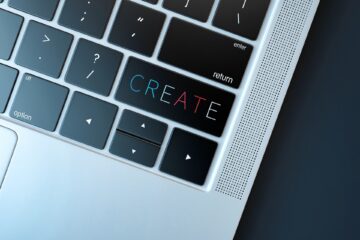![]()
Introduction:
Software can be understood as a set of instructions that tell a computer what to do, it gives instructions to the computer telling it what should be done. It comprises entire sets of programs, procedures, and routines that are associated with the operating system of a computer. It can be differentiated from the hardware as it directs hardware to perform a task.[1] Just like other crimes, soft lifting and other crimes related to software have increased these days. Not just minds but labor, time, and efforts are also vested in developing software. Some of the common methods of software piracy are soft lifting, hard disk loading, unauthorized renting. The ease of duplication of pirated software has threatened the software Industry.
It becomes difficult to differentiate between the original and the pirated software. They are so identical. Thus, an average person who doesn’t have much knowledge about the software cannot easily differentiate or recognize the difference between the two. This even indicated that the return on the huge investment made on research and development of the software can be solely enjoyed by the creators and most of the time, creators are not even given the credit. Thus, to protect the rights and benefits of the creator, intellectual property right plays a major role. It helps in saving the creator interest and encourage them for future innovations.
The information technology industry is the fastest growing industry. Thus, it becomes important to protect their rights and give credits to the actual creators of the software.
International Instruments
TRIPS
The agreement on Trade-Related Aspects of Intellectual Property Rights (TRIPS) is an international legal agreement between all the member nations of the World Trade Organization.2 Computer software is also included in its copyrighted works. Article 10 of the TRIPS Agreement talks about the protection of the software by the member states. It states that member states should protect their software, whether in source or object code. Article 10 of the TRIPS Agreement talks about the protection of the software by the member states. It states that member states should protect their software. It can be said that the efficiency of the protection of the software through copyright can be adversely affected by the idea-expression dichotomy. So, algorithms that are mere or small cannot be protected under copyright. however, source code and object code are products of the algorithms and can be protected against literal copying under copyright law.
Berne Convention
Berne convention was formerly known as the international conventions for the protection of the literary and artistic works, international copyright agreement adopted by an international conference in Berne.[2] It came into force in 1887 and thus plays a major role in forming the international instruments for the protection of intellectual property rights. Not like TRIPS, it does not extend the protection of copyright to software but also tells that works enumerated in article 2 of the Berne Conventions are not exhaustive. Not only this, but article 2(7) of the Berne Conventions also protects the works of applied arts dependant on domestic legislations such as to what extent protection may be granted and what are the conditions under which such works will be protected.
WIPO Copyright Treaty
WIPO Copyright Treaty (WCT) is a special agreement under the Berne Convention which deals with the protection of works and rights of their authors in the digital environment[3]. Article 4 of the treaty states that a computer program is protected as literary works under article 2 of the Berne Conventions. Only computer programs can be protected, irrespective of their mode and form of expressions. Article 6- 8 talks about the rights of the author such as the right of renting, right of distribution, and right of communication to the public. It aims to protect the right and interests of the authors.
International Trends
The United States of America
The issue of copyright protection of software products started in 1908 in the United States. An amendment was made for the protection of the computer software in the copyright act. It was specifically made to protect the computer software. The new amendment was specifically about giving two rights to the owner of a copy. These two rights were: the right to copy or adapt the program for use and the right to make backup copies. It can be implied from these rights that the owner of a copy was given rights through he can have the titles of the program and no one can else can take credit for the program. If someone is a copyright holder that he is given five exclusive rights to enjoy. Out of which some of the rights are relevant to the holder of a copyright such as the distribution right, the reproduction right, and the adaption right. [4]
The United Kingdom and Northern Ireland
To be able to protect software under the laws of the United Kingdom, a degree of creativity is mandatory. It showcases that the idea began with the author only and on one has stolen it. Even the United Kingdom copyright amendment act 1985 agrees that a computer program is a literary work. Not just this the new amendment also enhanced the criminal remedies for the cases of computer program piracy.[5] It became strict in terms of punishment as software theft can result in unlimited fines and up to two years of imprisonment. Making the new amendments, the United Kingdom made it very clear that no one can mess with the software and computer programs.
India
Just like the United Kingdom, a degree of creativity is necessary to protect the software under the copyright act 1957 or the patent act 1970. But if the software is protected under the patents act then one condition has to be fulfilled and that is the technical effect. Otherwise, it can be protected only under the copyright act, 1975.[6] Section 2 (o) of the copyright act talks about the literary work and includes computer programs, tables, and computer databases which directly indicates that it is protected. Even the same remedies will be provided in the infringement of the copyrighted computer software which is provided in other cases.[7]
Conclusion
Protecting a software not only means that we are protecting a program but it also means that we are protecting the rights of the creator, the amount of labor, hard work, and time he has put into it. By protecting the software or by giving him the copyright we are giving him the credit of it and to make no one else misuses it and takes the credit of it. As the IT industry is growing, the number of cybercrimes is also increasing. To protect the computer program, many international instruments have come into force, and not only this, countries are making amendments and make the law even stricter. With these new trends, some countries have made it mandatory to have a degree of creativity. But a lot has to be done and with time we will see even more stricter laws.
[1] Augustyn, A. (n.d.). software | Definition, Types, & Facts. Encyclopedia Britannica. https://www.britannica.com/technology/software
[2] Berne Convention | copyright law. (n.d.). Encyclopedia Britannica. https://www.britannica.com/topic/Berne-Convention
[3] WIPO Copyright Treaty (WCT). (n.d.). Www.Wipo.Int. https://www.wipo.int/treaties/en/ip/wct/
[4] United States of America – The International Free and Open Source Software Law Book. (n.d.). http://ifosslawbook.org/united-states-of-america/
[5] Copyright Protection for Software. (n.d.). InBrief.Co.Uk. https://www.inbrief.co.uk/intellectual-property/copyright-protection-for-software/
[6] Indian Copyright Software. (n.d.). Www.Legalservicesindia.Com. Retrieved September 1, 2020, from http://www.legalservicesindia.com/article/855/Indian-Copyright-Software.html
[7] Software Protection: International Instruments And Trends. (n.d.). Www.Legalserviceindia.Com. Retrieved September 1, 2020, from http://www.legalserviceindia.com/legal/article-3-software-protection-international-instruments-and-trends.html



0 Comments